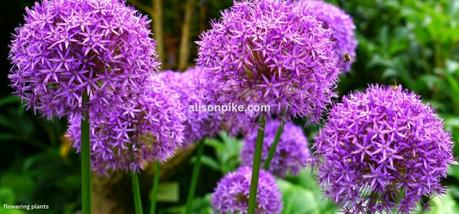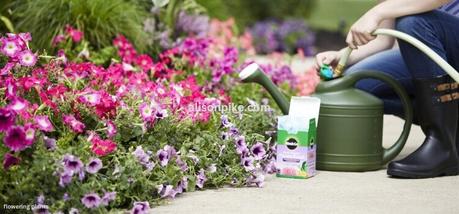As an Amazon Associate, I earn from qualifying purchases.

Flowering plants bring life and color to any garden or indoor space, but to ensure they reach their full potential, selecting the right fertilizer is crucial. There are so many fertilizers on the market that it can be hard to decide which one is right for your flowering plant's needs.
In this comprehensive guide, we'll delve into the various factors to consider when choosing a fertilizer, explore different types of fertilizers, and provide expert tips to help you achieve lush, vibrant blooms.
Understanding the Nutritional Needs of Flowering Plants
Before delving into the specifics of fertilizers, it's essential to understand the nutritional requirements of flowering plants. Flowering varieties, like all plants, need three nitrogen (N), three phosphorus (P), and one potassium (K), also known as NPK.
- Nitrogen (N): Essential for promoting lush, green foliage and robust stem growth.
- Phosphorus (P): It's essential for promoting robust root growth and flowering. It's crucial for promoting strong root growth and flowering
- Potassium (K): Helps improve plant health, disease tolerance, and flower production
In addition to these macronutrients, flowering plants also benefit from secondary nutrients and micronutrients, such as calcium, magnesium, sulfur, iron, and zinc, which play vital roles in various physiological processes.
Factors to Consider When Choosing a Fertilizer
The first step in selecting the best fertilizer for your flowering plants is to assess the composition of your soil. Test the soil for pH and nutrient levels. Different plants respond differently to different soil types, so knowing the composition of your soil will help you select the right fertilizer for your plants.
Consider the type of flowering plants you're cultivating and their growth stage. Some plants need specific fertilizers, while others need specific nutrients during different growth stages. For example, flowering annuals may benefit from a high-phosphorus fertilizer to support blooming, while perennial plants may require a more balanced nutrient ratio.
Fertilizers are available in granular, liquid, and slow-release forms. Consider your preferred application method and the convenience it offers. Granular fertilizers are simple to apply and release nutrients slowly and evenly. Liquid fertilizers absorb nutrients quickly but may need to be applied more frequently.
Choose fertilizers that are environmentally friendly and sustainable. Find organic or slow-release fertilizers that reduce the amount of water runoff and leaching. Additionally, consider the long-term impact of fertilizers on soil health and microbial activity.
Types of Fertilizers for Flowering Plants

Fertilizers made from synthetic or chemical materials are formulated with highly concentrated nutrients to deliver immediate results. They are readily available and often cost-effective but may have drawbacks, such as leaching and soil degradation over time. If you are using synthetic fertilizer, be sure to follow the application instructions to ensure that you do not fertilize too much, which can cause damage to plants and the soil.
Organic fertilizers come from compost, animal by-products, bone meal, seaweed, etc. They provide a slow and steady release of nutrients, improving soil structure and promoting microbial activity. Because organic fertilizers are eco-friendly and improve soil health over time, they are a great option for sustainable gardening.
Fertilizers that are slow-release are formulated to deliver nutrients over a longer period of time, eliminating the risk of nutrient loss and waste. These fertilizers are typically coated or encapsulated to control nutrient release rates, providing consistent feeding without the need for frequent applications. While slow-release fertilizers may be more expensive upfront, they offer long-lasting benefits and require less maintenance.
Expert Tips for Fertilizing Flowering Plants
- Timing is Key: Apply fertilizers during the active growing season, typically in spring and summer, to support vigorous growth and blooming.
- Follow Dosage Instructions: Do not fertilize too much. Too much can cause nutrient deficiencies, leaf burning, and stunting. Always follow the manufacturer's dosage instructions.
- Water Thoroughly After Application: After fertilizing, make sure your plants are well-drained so that nutrients can reach the roots.
- Monitor Plant Health: If you notice that your flowering plants are yellowing, stunting, or have leaf tip burn, it is a sign that there is a nutrient deficiency or excess. Adjust fertilization accordingly to maintain plant health.
- Rotate Fertilizers: To prevent nutrient depletion and soil acidity, alternate between different types of fertilizers and incorporate organic matter into the soil regularly.
Conclusion
One of the most important things you can do for your flowering plants is to choose the right fertilizer for them. Fertilizer for flowering plants is important for their growth, blooming, and overall health. By understanding your plants' nutritional needs, considering soil composition, and selecting the right type of fertilizer, you can create an optimal environment for flourishing flowers.
Whether you opt for synthetic, organic, or slow-release fertilizers, following expert tips for application and maintenance will ensure your flowering plants thrive year after year.

Ensure the success of your garden or indoor floral display by investing in the best fertilizer suited to your plant's specific requirements. With careful consideration and proper fertilization practices, you can enjoy a spectacular array of blooms that will enhance the beauty of your surroundings.
As an Amazon Associate, I earn from qualifying purchases.
